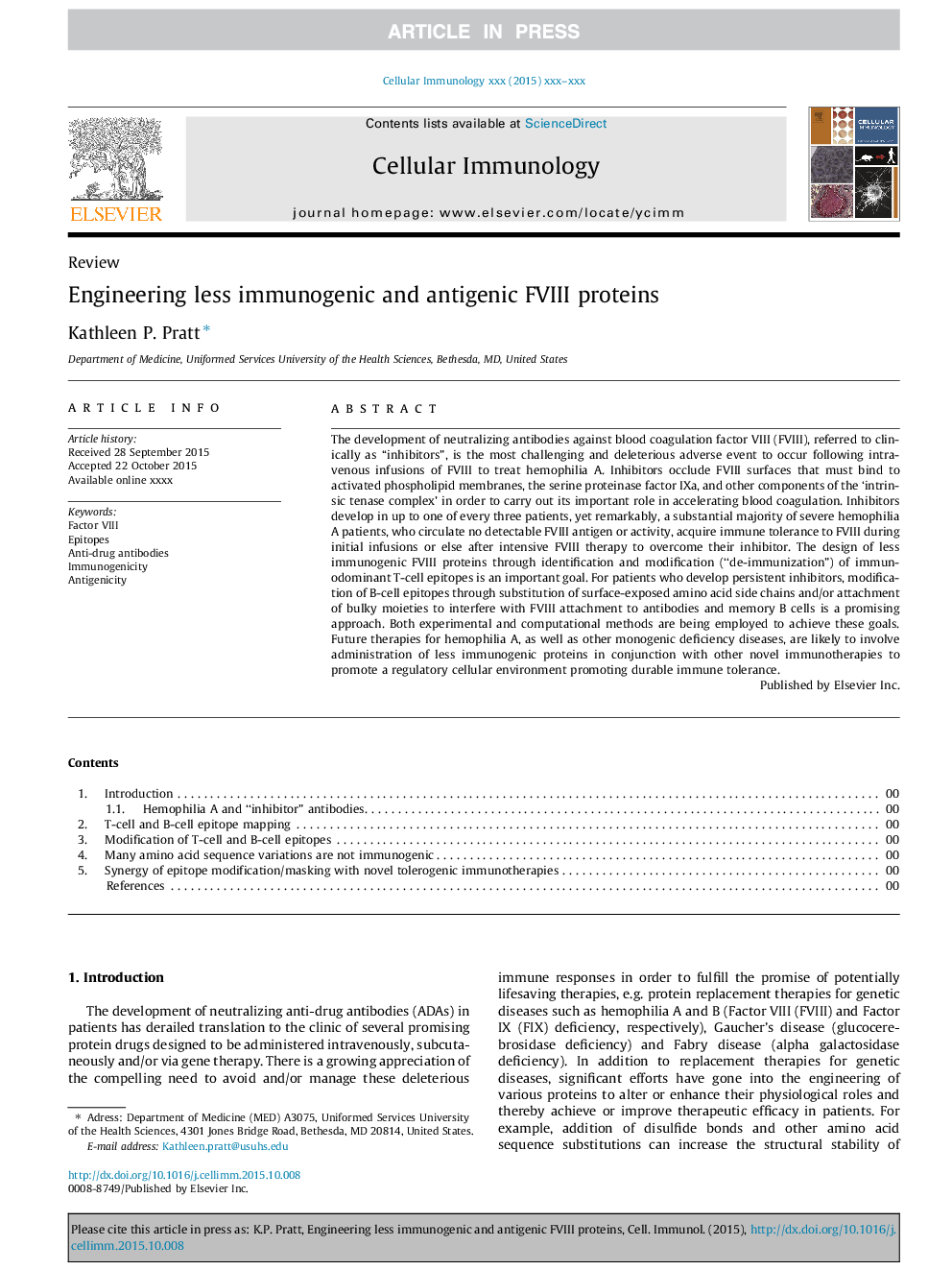| کد مقاله | کد نشریه | سال انتشار | مقاله انگلیسی | نسخه تمام متن |
|---|---|---|---|---|
| 8463719 | 1549396 | 2016 | 6 صفحه PDF | دانلود رایگان |
عنوان انگلیسی مقاله ISI
Engineering less immunogenic and antigenic FVIII proteins
دانلود مقاله + سفارش ترجمه
دانلود مقاله ISI انگلیسی
رایگان برای ایرانیان
کلمات کلیدی
موضوعات مرتبط
علوم زیستی و بیوفناوری
بیوشیمی، ژنتیک و زیست شناسی مولکولی
بیولوژی سلول
پیش نمایش صفحه اول مقاله

چکیده انگلیسی
The development of neutralizing antibodies against blood coagulation factor VIII (FVIII), referred to clinically as “inhibitors”, is the most challenging and deleterious adverse event to occur following intravenous infusions of FVIII to treat hemophilia A. Inhibitors occlude FVIII surfaces that must bind to activated phospholipid membranes, the serine proteinase factor IXa, and other components of the 'intrinsic tenase complex' in order to carry out its important role in accelerating blood coagulation. Inhibitors develop in up to one of every three patients, yet remarkably, a substantial majority of severe hemophilia A patients, who circulate no detectable FVIII antigen or activity, acquire immune tolerance to FVIII during initial infusions or else after intensive FVIII therapy to overcome their inhibitor. The design of less immunogenic FVIII proteins through identification and modification (“de-immunization”) of immunodominant T-cell epitopes is an important goal. For patients who develop persistent inhibitors, modification of B-cell epitopes through substitution of surface-exposed amino acid side chains and/or attachment of bulky moieties to interfere with FVIII attachment to antibodies and memory B cells is a promising approach. Both experimental and computational methods are being employed to achieve these goals. Future therapies for hemophilia A, as well as other monogenic deficiency diseases, are likely to involve administration of less immunogenic proteins in conjunction with other novel immunotherapies to promote a regulatory cellular environment promoting durable immune tolerance.
ناشر
Database: Elsevier - ScienceDirect (ساینس دایرکت)
Journal: Cellular Immunology - Volume 301, March 2016, Pages 12-17
Journal: Cellular Immunology - Volume 301, March 2016, Pages 12-17
نویسندگان
Kathleen P. Pratt,